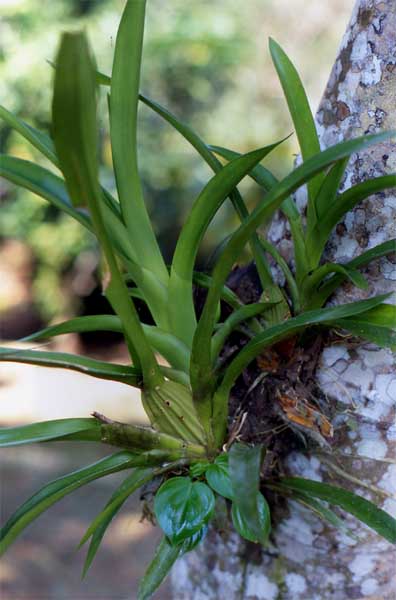The ecology of orchids is a topic as convoluted and complex as the flowers themselves. Over 25,000 species of
orchids are described: about one tenth the world's total plant species. Nearly all these orchids are
pollinated by insects—notably bees and wasps, but also butterflies, ants, flies and others. Moreover,
almost every orchid species is pollinated by just one or two kinds of insects. Even though they are
plentiful, a species of orchid may go extinct if its pollinator insect dies out. Many orchids live on other
plants (epiphytic) or on rocks (lithophytic). Although most orchids live in damp, tropical rainforest, in
some ways their adaptations closely resemble cacti. High in the canopy, the microhabitat is hot and dry, with
intense sunlight. Orchids do not need soil to grow—just somewhere with lots of light and to attach their
roots. A tree trunk does fine. Orchid roots, unlike those of most plants, tolerate exposure to light. They
are surrounded by a protective substance called "velamen," The strap-like leaves have a waxy coat to minimize
water loss and swellings, called "pseudobulbs," at the base of the leaf are used to store water.
|



